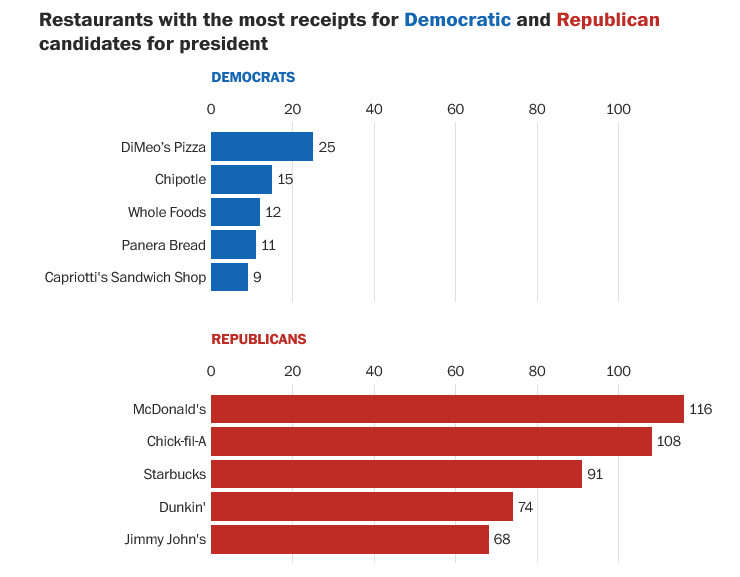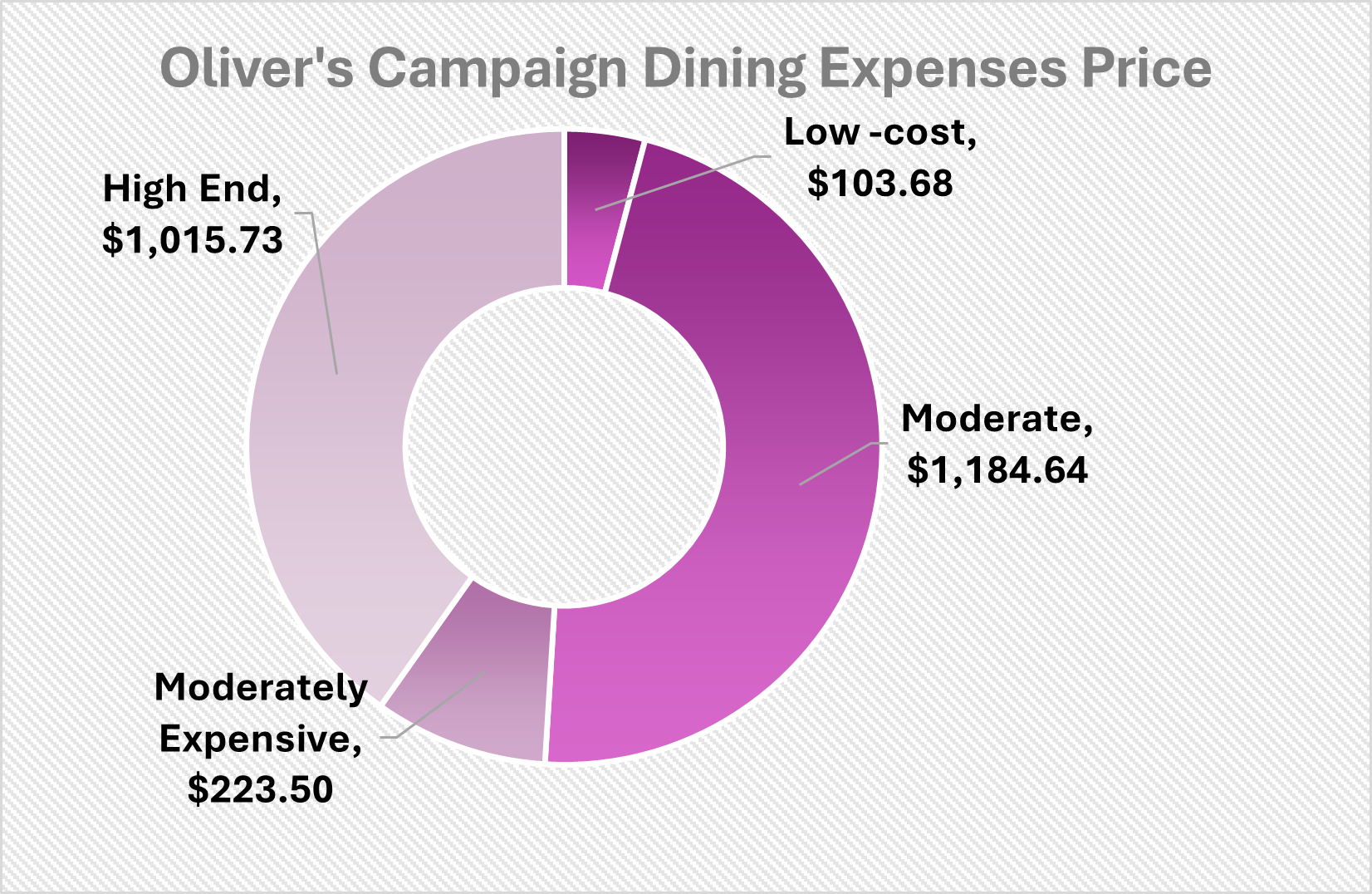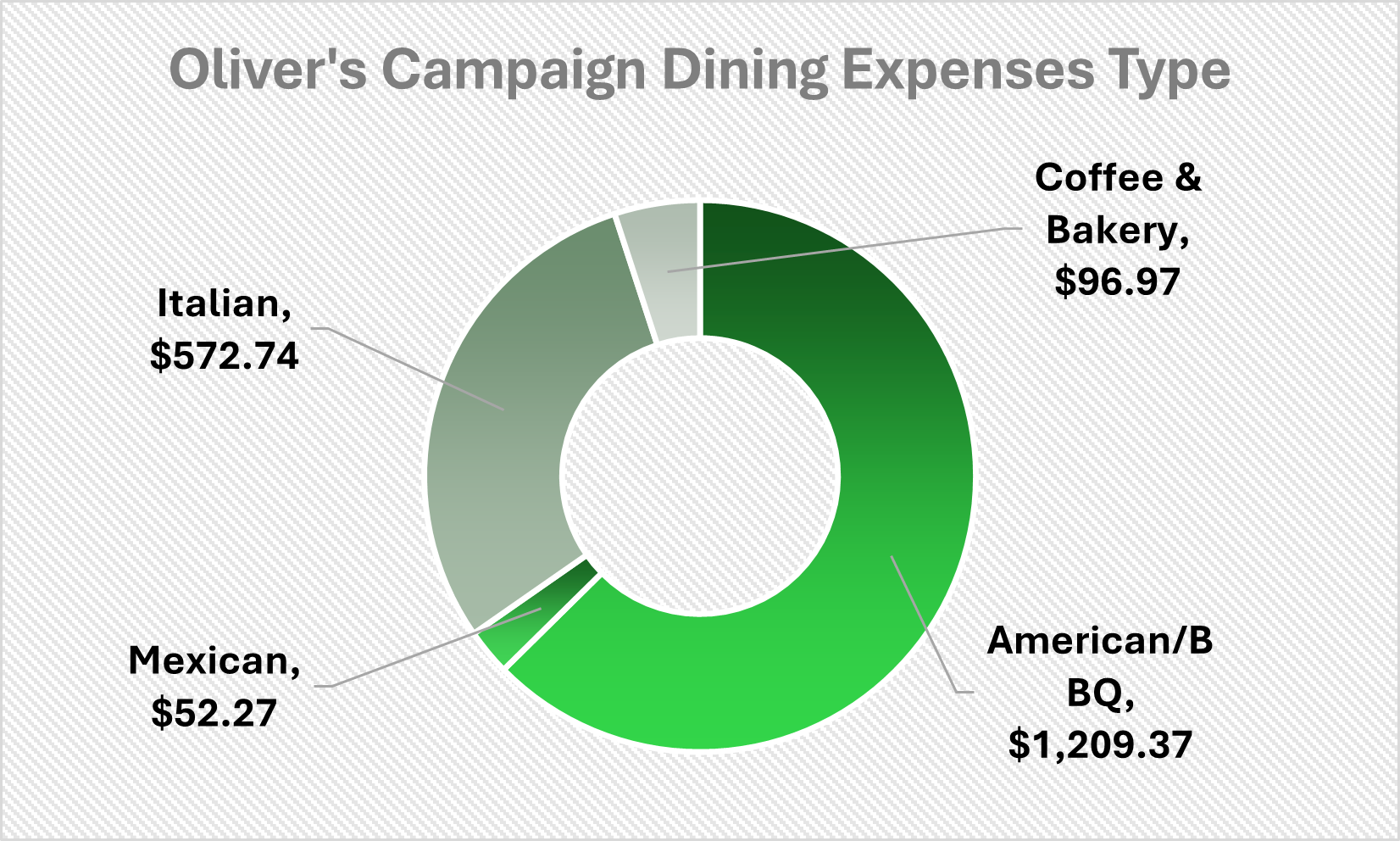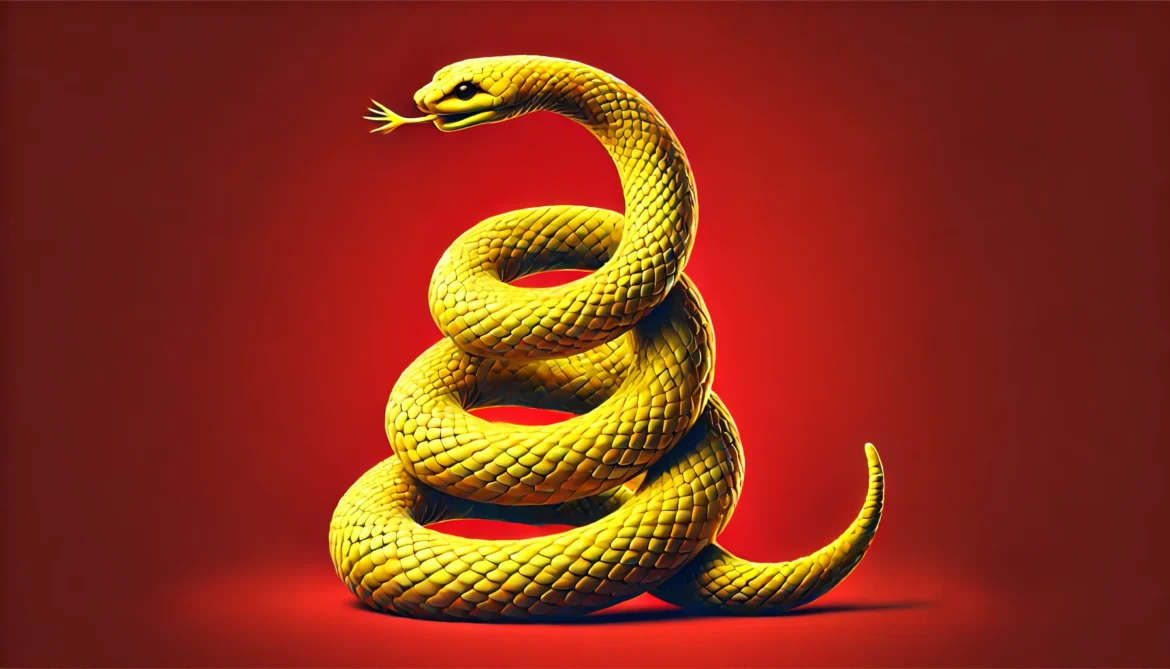The question of whether libertarianism belongs on the right or the left of the political spectrum may have just been answered. According to the new article released by The Washington Post, which made a deep dive into campaign finance reports to reveal strikingly partisan preferences for various restaurants, food choices may be the starkest difference between Republicans and Democrats. And oddly it does inform the question of who the politically homeless libertarians are closer to.
The Food Divide within the Duopoly

Source: The Washington Post
Republican and Democratic dining habits seem to be yet another front in America’s cultural divide, each reflecting their base’s identity. Republicans stick to McDonald’s, Chick-fil-A, and barbecue joints—places where the vibe is rather unpretentious. Democrats, meanwhile, gravitate toward Panera Bread, Sweetgreen, and trendy coffee spots. The foods devoured by each party follow quite well the elite human capital concentration in each camp. Instead of bringing the electorates together, food is politics, and every receipt is a subtle nod to each party’s cultural tribe.
The Appetites of the Largest Third Party
What then about the campaign of the libertarian nominee for president Chase Oliver? In terms of food, libertarians are left-wing. One can notice a conspicuous absence of the populist fast food adored by the activists of the Republican Party—the greasy, mass-produced icons of American consumption like McDonald’s. While Chase Oliver’s campaign did visit Burger King, Waffle House, Subway and Wendy’s, those fast-food joints are a rarity. Only around 4% of food spending occurred there. Just as the polling suggests libertarians have an overrepresentation of the elite human capital group, with little taste for fast food even on the campaign trail.

On the food type, Chase’s campaign shows off more eclecticism. The bulk of their food budget is spent on American and BBQ establishments, a choice more in line with Republican voters. The campaign has also seen fit to dabble in Italian dining and even a minor foray into the realm of Mexican cuisine. Libertarians, who pride themselves on rejecting the partisan herd, are here seen grazing at both ends of the ideological buffet, never quite committing to a culinary creed.

The Ultra-convenient Doordash
Chase’s campaign spent a significant portion of all its food on deliveries through apps. That sole venue covered over 40% of the food budget. In the case of the libertarian running for president, it is the Doordash app that is used exclusively to order food. Ah, DoorDash—modern convenience personified, and, perhaps unexpectedly, the quiet hero of Chase Oliver’s libertarian campaign.
This is another piece of the puzzle which suggests the dietary alignment with the Democrats. It is Democrats who are more likely to do takeaway according to The Washington Post study. DoorDash is popular among urban professionals and younger generations, groups often characterized by busy schedules and a preference for flexibility.
The One True Libertarian Diet?
The results from Oliver’s campaign expenses are of course a rather slim sample, likely skewed to Georgian and classical liberal tastes. The two other major factions, underrepresented in Chase’s campaign, may have entirely different food preferences. The tastes of the radical caucus within the LP, mostly comprised of uncompromising anarcho-capitalists might remain a mystery. In the case of the second faction at stake the Mises Caucus, an educated guess can be made that just as they skew pro-Trump politically, they also share similar tastes one could see among Republicans. I would not be surprised to find Angela McArdle and Michael Heise dining in McDonald’s and Chick-fil-A’s in between attending Trump rallies, they now tend to promote with their power over the Libertarian Party. Their allegiance to Donald Trump may run much deeper than just the multitude of attempts to sabotage the campaign of the Libertarian Party nominee. It could be culinary.
